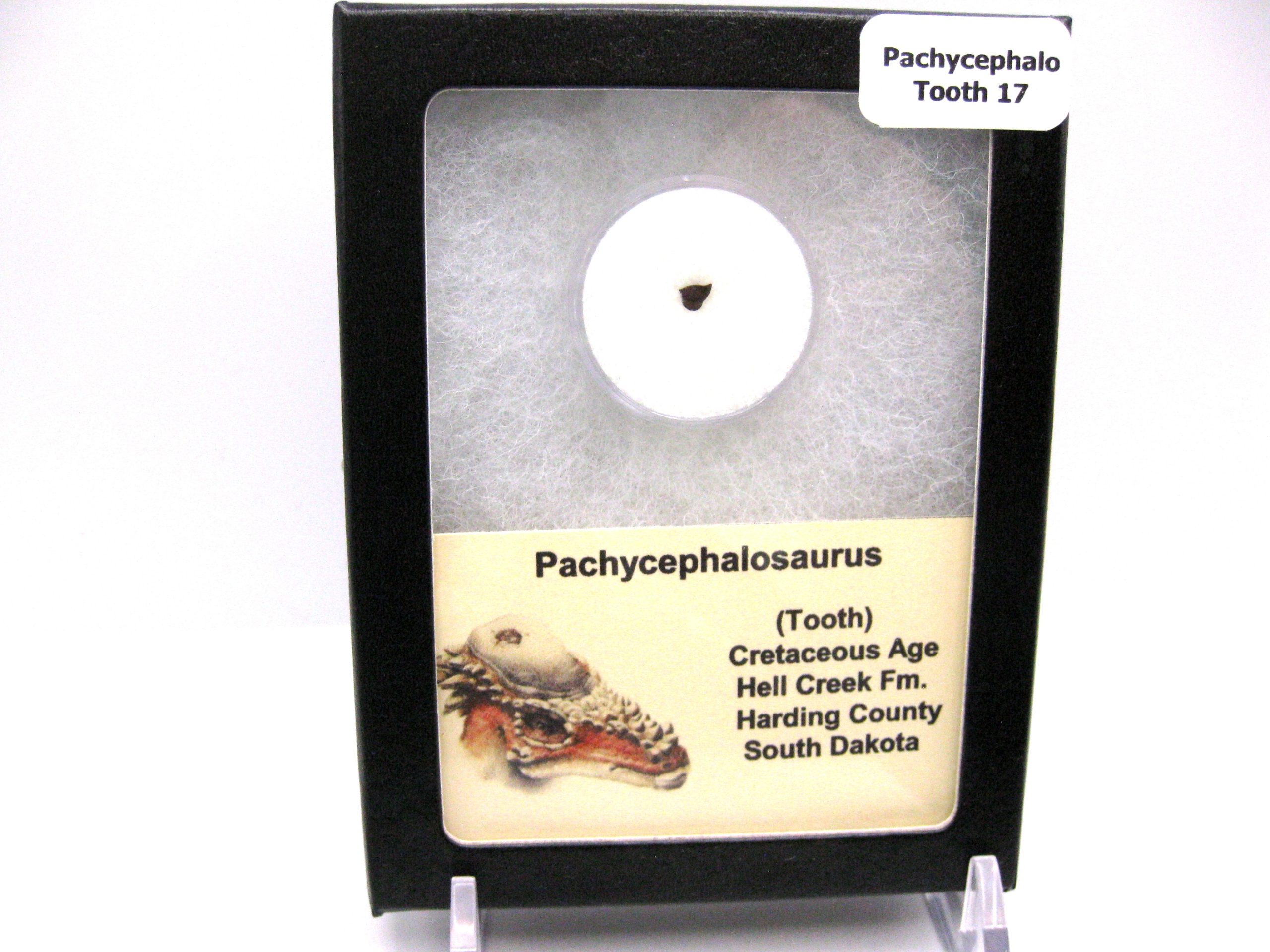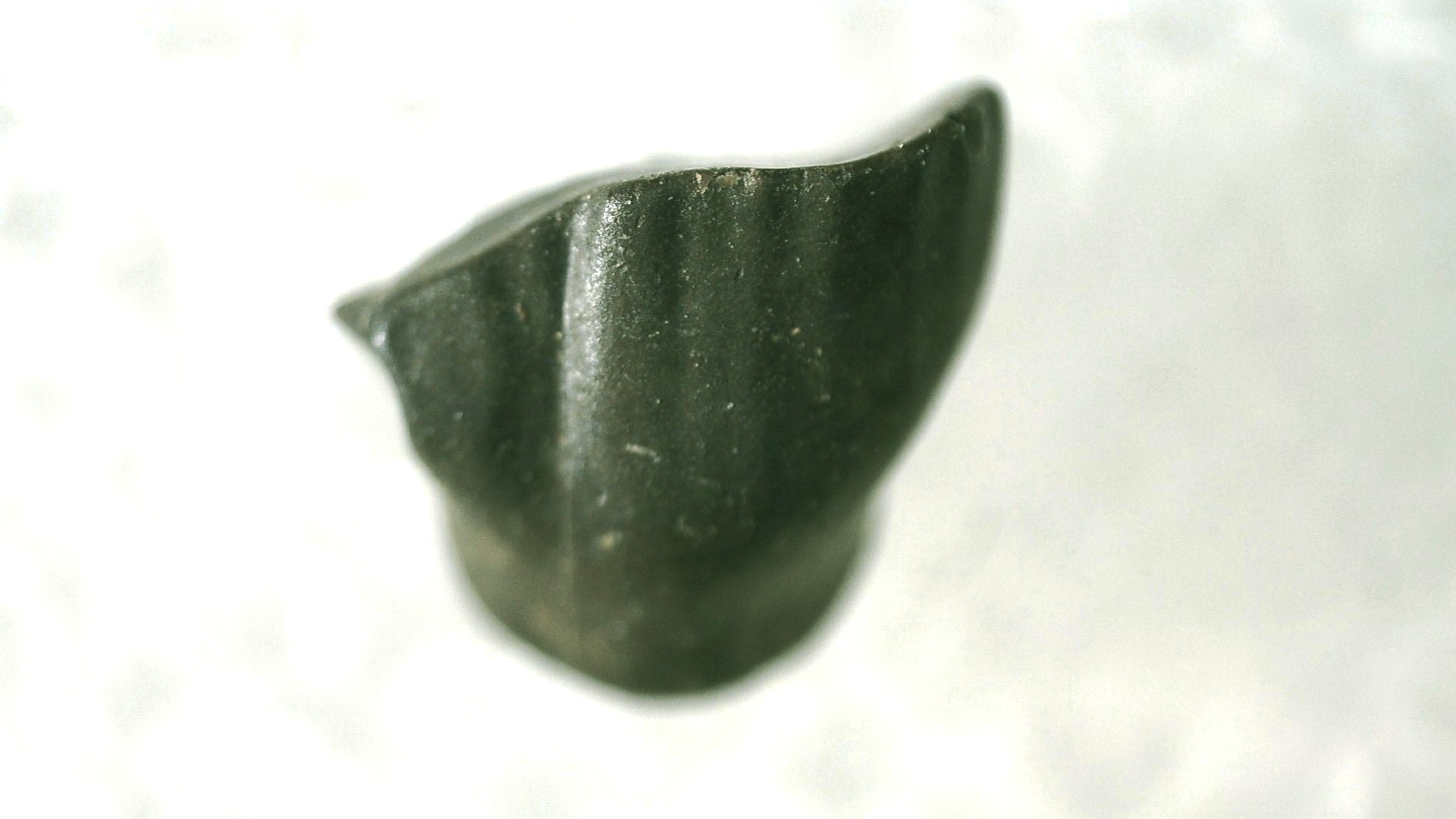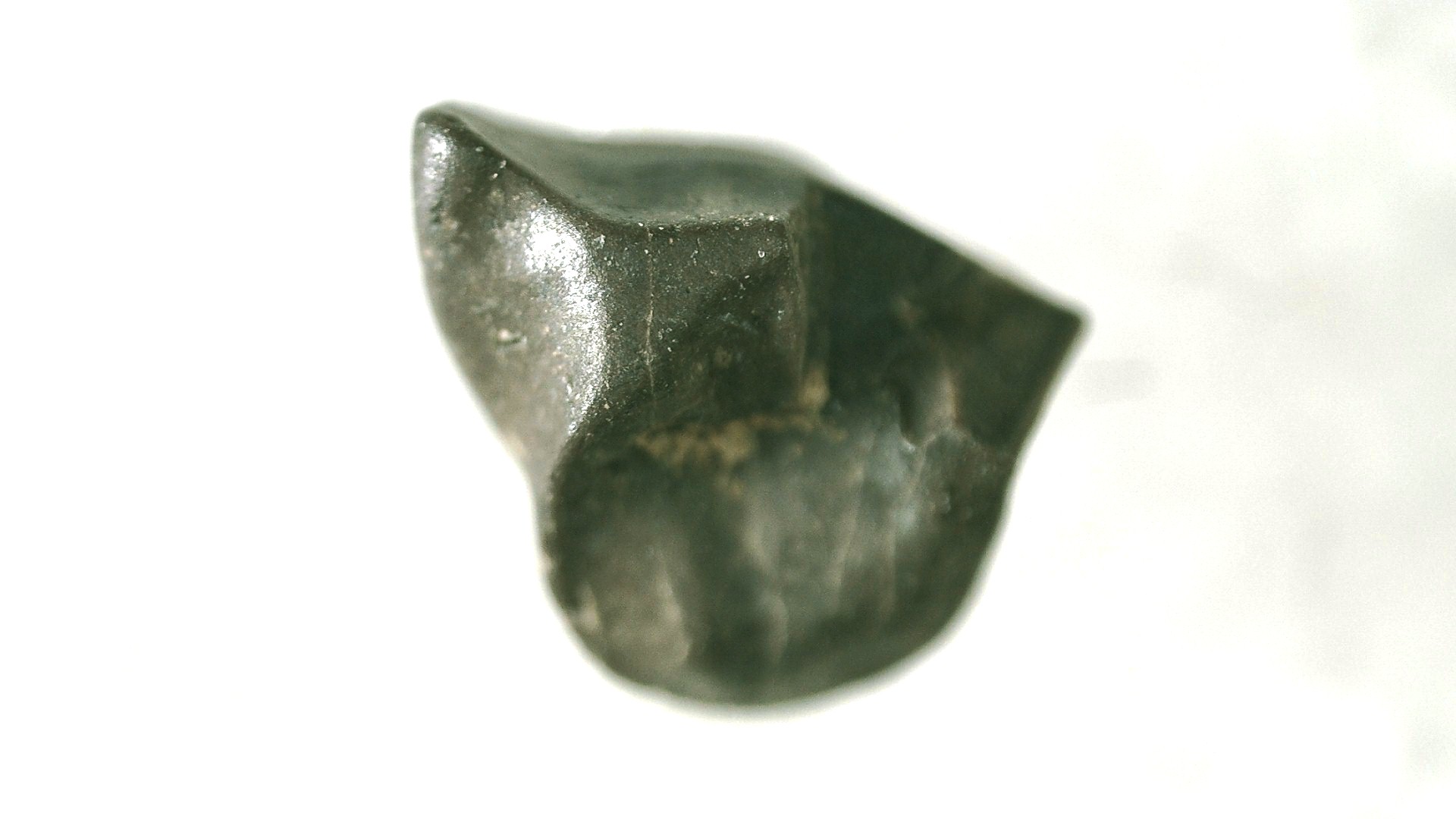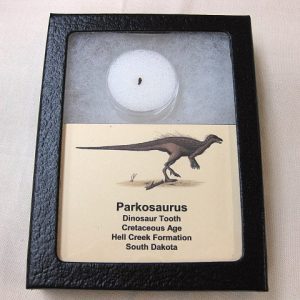Description
- Pachycephalosaurus wyomingensis (**Stygimoloch?)
- Cretaceous Age
- Hell Creek Formation
- Harding County, South Dakota
- Specimen measures approx. 1/8″ long and will come in the 3.25″ x 4.25″ Riker Mount with Label as Shown. The SMALL size of these teeth suggest they are from the smaller Stygimoloch dinosaur, but most likely from a Juvenile Pachycephalosaurus.
Pachycephalosaurus meaning “thick-headed lizard”, from Greek pachys-/παχύς- “thick”, kephale/κεφαλή “head” and sauros/σαῦρος “lizard”) is a genus of pachycephalosaurid dinosaurs. The type species, P. wyomingensis, is the only known species, but some researchers argue that there might be a second species, P. spinifer. It lived during the Late Cretaceous Period (Maastrichtian stage) of what is now North America. Remains have been excavated in Montana, South Dakota, Wyoming, and Alberta. It was a herbivorous creature which is primarily known from a single skull and a few extremely thick skull roofs, at 22 centimetres (9 inches) thick. More complete fossils have been found in recent years. Pachycephalosaurus was among the last non-avian dinosaurs before the Cretaceous–Paleogene extinction event. The genus Tylosteus has been synonymized with Pachycephalosaurus, as have the genera Stygimoloch and Dracorex in recent studies.[3][4]
Like other pachycephalosaurids, Pachycephalosaurus was a bipedal herbivore with an extremely thick skull roof. It possessed long hindlimbs and small forelimbs. Pachycephalosaurus is the largest-known pachycephalosaur. The thick skull domes of Pachycephalosaurus and related genera gave rise to the hypothesis that pachycephalosaurs used their skulls in intra-species combat. This hypothesis has been disputed in recent years.
**Stygimoloch is a controversial genus of Pachycephalosaurid due to two studies in 2009 and 2016 which argued that both Dracorex and Stygimoloch were actually immature forms of Pachycephalosaurus as well as a corroborative 2010 study which suggested that all flat-headed Pachycephalosaurids were juveniles of dome-headed adults.







